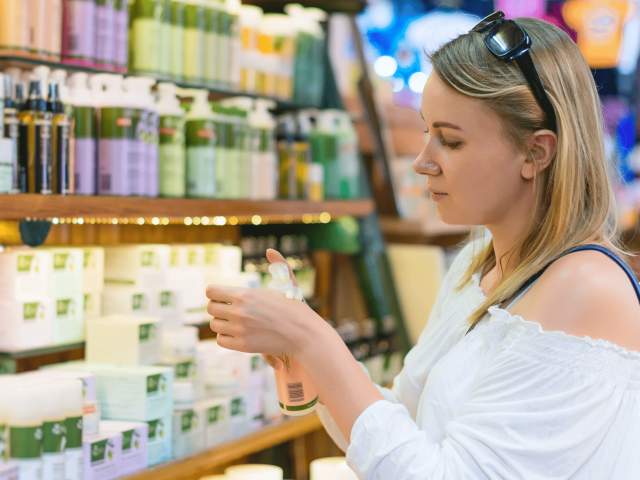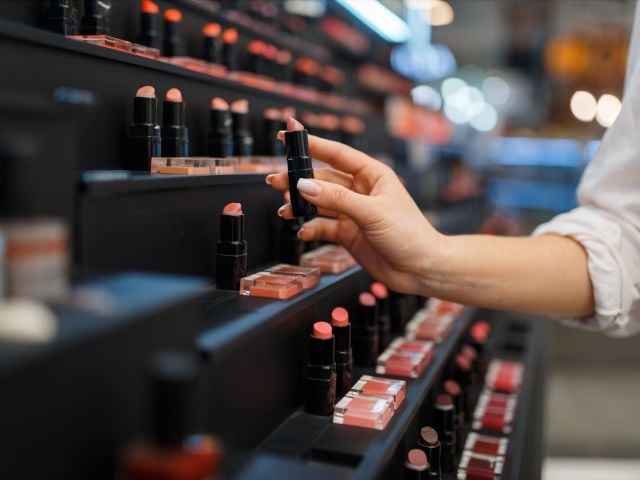FDA calls industry's bluff on product safety. Acting on a petition filed June 14, 2004 by the Environmental Working Group (EWG) [view petition], on February 3, 2005 the Food and Drug Administration issued an unprecedented warning to the cosmetics industry [view document] stating that the Agency is serious about enforcing the law requiring companies to inform consumers that personal care products have not been safety tested.
Such an enforcement action could ultimately require companies to issue consumer warnings for the more than 99 percent of personal care products on the market that have not been publicly assessed for safety, as documented in a 2004 EWG assessment of ingredients in nearly 7,500 products (EWG 2004a).
The implications of this warning penetrate deep into an industry that has for years hidden behind the findings of their internally-funded safety panel, the Cosmetic Ingredient Review, or CIR. Despite industry's control of the panel, the FDA regards the CIR's yearly series of ingredient safety reviews as a core component of the public health safety net, and calls CIR assessments an "important element in ensuring the safety of the cosmetic supply in the United States" (Brackett 2005).
In its near 30-year history, however, the industry's panel has reviewed just 11 percent of the 10,500 cosmetic ingredients cataloged by FDA (FDA 2000). The 89 percent of ingredients that remain unassessed are used in more than 99 percent of all products on the market (EWG 2004a).
By law, companies are required to post a warning label on products that have not been assessed for safety stating, "Warning: The safety of this product has not been determined." With its February 3rd letter, FDA is putting industry on notice that it is serious about enforcing consumer laws. At the top of the list are 356 products identified by EWG (EWG 2004b) as containing ingredients that the industry's safety panel attempted to review, but instead found lacked basic testing data. The panel could not substantiate the safety of these ingredients. Ultimately under threat of enforcement are the more than 99 percent of all products that contain one or more ingredients that have never been assessed for either data adequacy or basic safety by the industry's panel, the FDA, or any other publicly accountable institution.
Buyer beware. Surveys show that many consumers believe that companies are required to test personal care products for safety before they're sold. It's not the case. According to FDA, "...a cosmetic manufacturer may use almost any raw material as a cosmetic ingredient and market the product without an approval from FDA" (FDA 1995).
While some companies make products that would be safe enough to eat, other companies choose to use known human carcinogens or developmental toxins like coal tar and lead acetate. In a competitive marketplace progressive companies with health as their top priority may lose market shares to companies willing to use cheaper commodity chemicals with ill-defined or even known risks. Some companies may assess the safety of their products rigorously and independently, but other companies may not assess at all. That's legal. This unequal footing comes from a safety net not just of a loose weave but full of gaping holes, leaving consumers at potential risk.
When risky chemicals are used in cosmetics, the stakes are high. These compounds are not trace contaminants. They are the base ingredients of the product, just as flour is an ingredient in bread. Many of these chemicals are found in percent levels in personal care products, nearly all easily penetrate the skin, and some are ingested directly after they are applied to lips or hands. And increasingly, companies are adding customized, futuristic "penetration enhancers" to drive ingredients even deeper into the skin, like Loreal's new nanoparticle technology — a miniscule, fluid-filled sack designed to burrow deep into the skin to deliver its "active ingredients." No safety testing required.
Scientists find common cosmetic ingredients in human tissues, like industrial plasticizers called phthalates in urine, preservatives called parabens in breast tumor tissue, and persistent fragrance components like musk xylene in human fat. Do the levels at which they are found pose risks? Those studies have not been done. They are not required.
Consumer health in the hands of industry. Grossly underfunded and encumbered by a cosmetic safety law that renders the Agency nearly impotent, FDA's cosmetic office has no standing cosmetic review safety committee, cannot require testing of products or ingredients, cannot require companies to report injuries or even deaths from the use of their products, and cannot force companies to recall harmful products (FDA 1995). Instead, the Agency sends a liaison to the industry's safety panel meetings to observe and comment.
Eighty percent of the industry panel's reviews are limited to advice to industry on ingredient levels that will minimize risk of skin rashes and other allergic reactions (EWG 2004a). And 89 percent of ingredients used in cosmetics have not even received a rash and allergy review from the industry panel, let alone a serious assessment of the ingredients' potential to cause cancer or harm the development of a baby in the womb.
When EWG cross-linked ingredient listings in 7,500 products with seven government or industry toxicity databases, we found that one-third of all products contain ingredients linked to cancer, 70 percent of products may be contaminated with harmful impurities, and more than half of all products contain "penetration enhancers" that drive ingredients deeper into the skin to the blood vessels below (EWG 2004a). For the vast majority of these products and ingredients, the exact health risks from consumer exposures are unknown.
Our 2004 survey of 2,300 people conducted with the Campaign for Safe Cosmetics shows that on average people use nine products a day with 126 unique ingredients. These exposures may add up to health problems, but neither industry nor the FDA is doing the work to define and reduce the risks. The products are untested; the risks are unknown.
At industry's discretion are not only the range of ingredients used in products (only nine chemicals are banned from cosmetics), but also the full breadth of imaginable marketing claims, none of which are subject to review or required to be true. The word "organic" could just as easily — and just as legally — be printed on the label of a product made entirely of plants grown to strict USDA organic standards, or on the package of a mixture of industrial solvents and polymers derived from petrochemicals. Likewise, no legal definition exists for "dermatologist tested," "cruelty free," "fragrance free," or "hypoallergenic." The claims could have substantial scientific backing, or could mean nothing at all.
As of March 2, 2005, 68 progressive companies with health as a top priority have signed a pledge with the Campaign for Safe Cosmetics to produce products free of ingredients linked to cancer and birth defects (www.safecosmetics.org). The Campaign, a coalition of environmental and public health groups working in partnership with these companies, is taking action to help move companies voluntarily toward safety within the current vacuum of mandatory health protections. And now FDA is turning up the heat on the entire industry.
FDA turns up the heat. Although FDA cannot require companies to safety test their products, and cannot require that marketing claims be true, the Agency can require that companies print a warning on the label of products that have not been assessed for safety. And this is what the Agency has indicated they plan to do in their letter of February 3rd. The Agency also writes that it will develop definitive guidelines for industry on what must be done to substantiate the safety of a product, to absolve companies of the responsibility to print warnings. EWG has written to FDA applauding the Agency for the actions they have proposed in their February 3rd letter, and requesting that FDA convene a panel of independent experts, free of financial ties to the cosmetics industry, to develop this critical guidance that will define, for the first time, what is safe enough to be sold as a personal care product in the U.S.
It's time for the cosmetics industry to be honest with consumers about what is known and what remains unknown about the safety of the products Americans use every day. Americans deserve safe products. Short of that, consumers deserve, and the law requires, at least a warning label, to help people make informed decisions about the products they buy and use each day.
References
Brackett, Robert E. 2005. Letter to Mr. Edward Kavanaugh, President, Cosmetic, Toiletry and Fragrance Association from Dr. Robert E. Brackett, Director, FDA's Center for Food Safety and Applied Nutrition. February 3, 2005.
Environmental Working Group (EWG). 2004a. Skin Deep: A Safety Assessment of Ingredients in Personal Care Products. Available online at www.cosmeticdatabase.com.
Environmental Working Group (EWG). 2004b. Citizen Petition to Cease Unlawful Sale of Misbranded & Adulterated Cosmetics. Petition from EWG to the Food and Drug Administration. June 14, 2004.
Food and Drug Administration (FDA). 1995. FDA Center for Food Safety and Applied Nutrition, Office of Cosmetics and Colors. Fact Sheet. FDA Authority Over Cosmetics. February 3, 1995. Accessed March 2, 2005 at http://www.cfsan.fda.gov/~dms/cos-206.html.
Food and Drug Administration (FDA). 2000. Center for Food Safety Applied Nutrition. Cosmetics Compliance Program. Domestic Cosmetics Program. Issued July 31, 2000. Accessed online March 1, 2005 at http://www.cfsan.fda.gov/~comm/cp29001.html.
• View FDA's warning letter to cosmetics industry (PDF document)
Text of the response sent by EWG to FDA:
March 7, 2005
Robert E. Brackett, Ph.D.
Director, Center for Food Safety and Applied Nutrition
Food and Drug Administration
5100 Paint Branch Parkway
College Park, MD 20740-3835
Dear Dr. Brackett:
We recently received a copy of your February 3rd letter to Mr. Kavanaugh of the Cosmetic, Toiletry and Fragrance Association (CTFA) noting that your 2005 Program Priorities include responding to and acting on issues raised in a petition the Environmental Working Group (EWG) filed with your Agency on June 14, 2004. As you know, our petition documented 356 products being sold in apparent violation of the Federal Food, Drug, and Cosmetic Act: these products contain ingredients that have not been substantiated for safety, and they fail to bear the warning label required by law, "Warning — The safety of this product has not been determined."
We are writing to express our full support of the actions you outlined in your letter, and of your Agency's efforts to ensure that cosmetics sold in this country are safe and comply with the law. To that end we request that the Agency convene a panel of independent experts comprised of individuals free of financial ties to the cosmetic industry, to aid in developing guidance for industry on the requirements for substantiating the safety of ingredients, a task you note in your February 3rd letter that you are undertaking. Such a panel of experts will help ensure that this guidance, if followed, would protect human health to the fullest extent possible.
We believe that the safety issues raised in our petition are of utmost importance to public health:
- Our 2004 survey of 2,300 people shows that on average, American consumers use nine personal care products every day, with 126 unique ingredients, some of which are linked to cancer and other serious health concerns.
- But what is not known about the health risks of ingredients also raises concerns. The FDA has documented the use of 10,500 ingredients in personal care products [1]. In its near 30-year history the industry's safety panel had assessed just 1,175 ingredients — or 11 percent of the total — as of the end of 2003 [2]. Therefore, fully 89 percent of ingredients used in cosmetics have not been assessed for safety by the CIR, the FDA, or any other publicly accountable institution.
- These unassessed ingredients are used in more than 99 percent of all products on the market, according to our comprehensive assessment of ingredient prevalence in nearly 7,500 products [3]. In the course of our research on ingredients in cosmetics we have not identified a single product bearing the required label, warning consumers that the product's safety has not been determined.
Consumers have a right to know, under the law, whether or not the ingredients in a product have been assessed for safety. We support FDA's efforts to ensure that untested cosmetics bear the warning label required by law.
In addition to notifying the industry trade organization that you are investigating their compliance with warning label requirements, you also note in your February 3rd letter that you plan to issue guidance on another issue central to our petition — the requirements for adequately substantiating the safety of cosmetic ingredients. In our petition we note that the Agency has not provided to the industry a definition of the term "safe" with respect to cosmetics sold in the U.S.; in the absence of Agency guidance, the cosmetics industry currently decides what is safe and what is not. We support your efforts to develop this critical guidance, and repeat below the language we proposed in our petition as an appropriate definition for "adequately substantiated for safety" that would protect public health and absolve a company of the requirement to place warnings on products:
Substantiation, through peer-reviewed scientific publications or publicly available industry studies, of a reasonable certainty of no harm from aggregate exposures to the product and its component ingredients including impurities, taking into account chemicals that may increase penetration of the product or its component chemicals through the skin, and including all anticipated cosmetic exposures and all other exposures for which there is reliable information, taking into consideration vulnerable populations such as infants and pregnant women.
Any finding of safety for a cosmetic product must explicitly account for risks posed by impurities until such time as impurities are removed from the component ingredients or the product is reformulated in such a way as to preclude the formation of impurities by the component ingredients in the product.
As you develop guidance for industry on the requirements for safety substantiation, we urge you to convene a panel of outside experts free of financial ties to the cosmetics industry, to aid in the development and review of such guidance. These experts should collectively represent a broad array of applicable areas of expertise, including toxicology, human health risk assessment, and children's health, for example.
The creation of an expert panel to develop this guidance falls squarely within your Agency's discretion. The FDA has a long history of effectively utilizing advisory panels, and has broad discretion to appoint and consult expert panels under the Federal Advisory Committee Act (FACA) and FDA regulations [4,5]. FACA provides that the Commissioner may establish an advisory committee if it is in the public interest and in furtherance of the Agency's mission [4]. FDA has developed detailed guidelines in accordance with FACA governing the development and operation of these committees [5]. In the case of developing a clear standard for the safety of cosmetic ingredients, which Americans are exposed to an average of nine times each day, the public interest would be well served by the advice of a panel of truly independent experts.
Again, we support all your efforts to ensure that cosmetics are safe for consumers. We look forward to your response to our petition and to this letter. Please contact us if we can provide any assistance or clarify information we provided in our petition.
Sincerely,
Jane Houlihan
Vice President for Research
Arianne Callender
General Counsel
References (for March 7 2005 Letter from EWG to FDA)
[1] Cosmetics Ingredient Review (CIR) (2003). 2003 CIR Compendium, containing abstracts, discussions, and conclusions of CIR cosmetic ingredient safety assessments. Washington DC.
[2] Food and Drug Administration (FDA). 2000. Center for Food Safety Applied Nutrition. Cosmetics Compliance Program. Domestic Cosmetics Program. Issued July 31, 2000. Accessed online March 1, 2005 at http://www.cfsan.fda.gov/~comm/cp29001.html.
[3] Environmental Working Group (EWG). 2004a. Skin Deep: A Safety Assessment of Ingredients in Personal Care Products. Available online at www.cosmeticdatabase.com.
[4] Federal Advisory Committee Act, (FACA). 5 U.S.C. Appx § 9(a)(2). "No advisory committee shall be established unless such establishment is ... determined ... to be in the public interest in connection with the performance of duties imposed on that agency by law."
[5] 21 C.F.R. §§ 14.1 et seq. Authorizing FDA advisory committees where "the Commissioner concludes, as a matter of discretion, that it is in the public interest for a standing or ad hoc policy or technical public advisory committee (advisory committee or committee) to hold a public hearing and to review and make recommendations on any matter before FDA and for interested persons to present information and views at an oral public hearing before the advisory committee."
Copy: Dr. Linda Katz, Director, Office of Cosmetics and Colors



